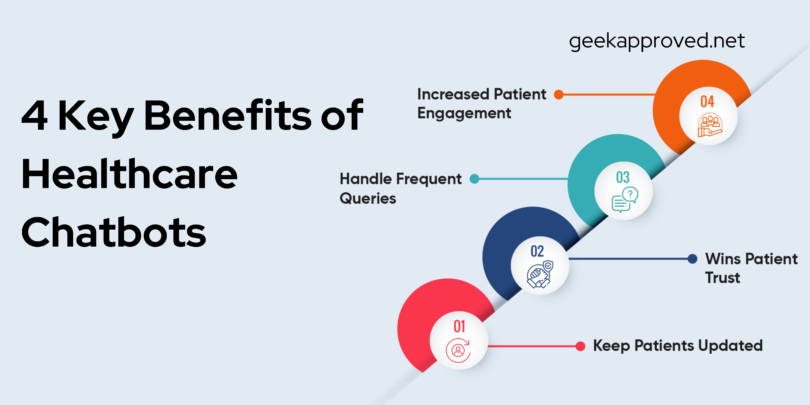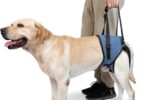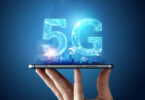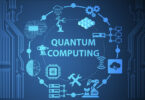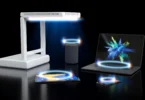Perhaps, it was during COVID-19, the widespread pandemic, that presented us with a vision, of the future of IoT in healthcare. With numerous medical emergencies and a shortage of helping hands, IoT had solutions to help these people. These solutions included exclusive health monitoring, and contact tracing rendering support for authorities to have the Coronavirus spread under control.
IoT is not just a theory or idea anymore, it is an integrated part of our life. As IoT spreads its wings into various aspects of our lives, the healthcare sector is no different. The implementation of IoT in healthcare systems is increasing every day at an unpredictable pace. It is more likely reported that the market revenue of IoT in the healthcare system was around $74.31 billion in 2024. It is predicted to reach $135.87 billion by 2025. IoT applications in each sector are rated for their potential economic and social influence, timeline for mass conversion, and Technology Readiness Level. The future of IoT in healthcare is a very progressive and possible idea that is already proving its worth.

What is IoT and how might it help in the healthcare sector?
As we talk big about advances of IoT in various sectors, we need to understand what IoT actually is. IoT is a short terminology used to describe the Internet of Things. In Layman’s terms, IoT is a network of interconnected devices that might communicate and exchange data as per requirement. In other terms, IoT is an ecosystem of interconnected devices. These devices come equipped with various sensors and actuators. The sensors gather information from their surroundings and then actuators send over the necessary information to the required device.
IoT can be of any spectrum or in any form. From as small as intelligent thermostats, it can get as big as car trackers and health monitors. IoT establishment reduces your requirement to move from your couch to get mundane things done. The IoT works with M2M or the machine-to-machine interface where devices communicate with one another without a hub in the middle to interpret information. This makes the process of handing over information easier. IoT has more use in the healthcare system than any other sector. The merger between IoT and the healthcare system will bring forth a bright future for IoT in the healthcare system. IoT will be infused into the healthcare infrastructure.
In recent days, the healthcare system has shown brisk growth and has created more employment opportunities. This is a major driver in the car of revenue and employment opportunities. For example, a few years earlier, one might have had to do physical examinations in the hospital to treat an illness or disease. However, the use of IoT in machines has brought about crazy changes and made it easy to do tests in a couple of minutes.
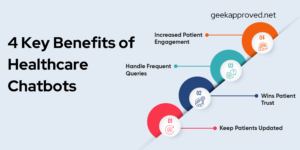
During the 2020 Pandemic, it had become a necessity for patients to connect with their doctors virtually. During that time, there was the use of telemedicine which made it easy for healthcare professionals and patients to connect contactless. IoT revolutionized the whole healthcare system by giving professionals and patients the chance to connect virtually. Currently, the global IoT market size in the healthcare industry is approximately $74.3 million and it is predicted to expand in the coming years at a CAGR value of 22.28%.
IoT has expanded to the Internet of Medical Things (IoMT) where some of their devices have been implemented to get real-time updates virtually. This is already a big leap in the future of IoT in healthcare.
What are the IoT use cases in healthcare?
The chances for IoT development are indefinite as it is. However, in the case of healthcare systems, it is expanding in the applications areas of emergency care, insurance practices, and pharmacies. As mentioned above, IoT can be defined as a device with props like sensors and actuators that help in communicating with various devices in the house.
IoT is already bringing revolution in the healthcare industry by using tools that can assemble various data about patients and obtain information from medical practitioners. One of the examples includes constant glucose monitoring for insulin pens that run efficiently to cater to diabetic patients.
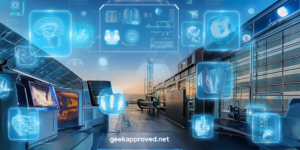 These devices can interact with each other and take necessary procedures that aid in providing help or saving lives. In essence, IoT healthcare equipment can execute rational thinking like connecting with the emergency care unit while collecting patient data in need of urgent help. Not only that, but it can also help in sending general patient data to concerned individuals like doctors, emergency contacts, and much more. After collecting the data, IoT in the healthcare system transfers the data to the cloud to alert doctors about any critical situations. IoT development in healthcare might also help to observe patient status, check unavailable ambulances, and what sort of remedy is required according to the situation.
These devices can interact with each other and take necessary procedures that aid in providing help or saving lives. In essence, IoT healthcare equipment can execute rational thinking like connecting with the emergency care unit while collecting patient data in need of urgent help. Not only that, but it can also help in sending general patient data to concerned individuals like doctors, emergency contacts, and much more. After collecting the data, IoT in the healthcare system transfers the data to the cloud to alert doctors about any critical situations. IoT development in healthcare might also help to observe patient status, check unavailable ambulances, and what sort of remedy is required according to the situation.
The future of IoT in healthcare is vast and still useful. Various amounts of trouble can be avoided by just using the devices to send in data that might have been difficult if it was done physically.
Emergency Medical Application
IoT development in healthcare has mainly reduced emergency room wait lines. Radio Frequency Identification Tags (RFID), infrared sensors, and computer vision collect real-time data about hospital bed availability. This helps to identify people who no longer need immediate care and can be moved to observation rooms. This leaves a lot of space for people who need immediate care. This proves that the future of IoT in healthcare is very bright.
The very same data helps EMTs (Emergency Medication Technicians) who bring patients into the hospitals. If EMTs can comprehend that there is a lack of beds in one hospital they can reroute to another hospital. This saves a lot of time and prevents unnecessary casualties due to neglect.
Bed availability is the least of the things that IoT in healthcare can assess. Infrared sensors can trace blood supply and samples available at the hospital to not waste much time. Thus, this helps EMTs to acknowledge the best facility for a patient to be taken to.
Upon enrolling in the emergency room, patients receive IoT-enabled ID wristbands that trace them through every step of their visit. This helps the facilities track the speed of the healing process of the patients. This helps to track progress in different spheres of the healing journey.
Types of Innovative IoT Medical Tools
According to WHO (World Health Organization), there are around 2 million different kinds of medical equipment discovered and in use as of now. However, we can categorize them into approximately more than 7000 generic media groups.
As the world keeps moving and developing, there are problems that need to be taken notice to and solutions must be brought for these problems. These solutions come in different shapes, sizes, and forms. However, these solutions also have a few groups that are listed below:
Point of Care Devices
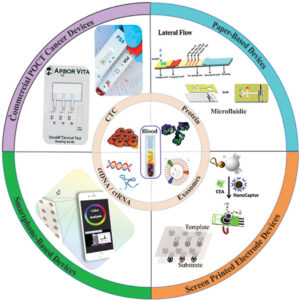 These are a wide diversity of diagnostic tools intended to produce results outside of laboratory conditions. They are mostly used at the doctor’s home or at home to assemble and analyze samples like blood, saliva, skin cells, etc.
These are a wide diversity of diagnostic tools intended to produce results outside of laboratory conditions. They are mostly used at the doctor’s home or at home to assemble and analyze samples like blood, saliva, skin cells, etc.
Smart Pills
Smart Pills are also known as intelligent pills or digital pills. They are small electronic devices in pharmaceutical capsules carrying ingestible sensors. These smart pills perform multitudes of functions, such as monitoring important well-being indicators like local pH, temperature, blood pressure, etc. giving drugs to a targeted area, imaging for effective diagnosis of gastro-intestinal disorders, etc.
Emergency Response Systems
Personal emergency response operations, sometimes also called medical alert methods, are special medical devices used to request help when an emergency event occurs via a help button. PERSs can be efficient for people having limitations to their mobility and require emergency medical care. For example, older senior people might need help when they are alone.
Clinical-Scale Wearables
These wearables are the IoT tools and supporting platforms certified and recommended by respective regulatory and health authorities, such as the FDA (US Food and Drug Administration). Devices under this category are commonly utilized at home or in clinics prescribed or advised by a physician. Their focus is essential to improve chronic conditions and diseases. These are one of the devised result of the future of IoT in healthcare.
The future of IoT in healthcare in monitoring
The Internet of Things is built as a revolution in healthcare delivery. By the amalgamation of medical devices and systems, IoT enables real-time monitoring, data-driven insights, and personalized care.
One of the model targets for growth is remote patient monitoring. Via analysis of vast amounts of data, healthcare providers and medical professionals can identify patterns in bodily functions and predict disease outbreaks. This might provide them with enough time for interventions. In addition to that, IoT can optimize various hospital operations, from inventory management to energy efficiency. This proves to be cost-efficient and provides better patient experiences.
Technological advancements might awe us all with more sophisticated IoT applications in healthcare. Integrating IoT with Artificial Intelligence (AI) will enable predictive analytics and personalized treatment plans. The convergence of IoT, vast data, and AI holds the potential to transform the healthcare sector. The changes might be in the form of accessibility, efficiency, or regards to patient-centredness.
Conclusion
The world keeps moving forward, not without any sort of progress every single day. IoT is just another loop in the blanket of this technological world. The future of IoT in healthcare is very bright and helpful. IoT in the healthcare sector has made it a lot easier to keep up with patients, assess the criteria for the right hospital in case of accidents, and decrease the number of casualties due to neglect.
The future of IoT in healthcare is not unpredictable. Surely, IoT in the healthcare sphere has already brought several positive changes to the sphere. However, integration with AI might lead to greater heights. The future of IoT in healthcare is blooming, and so are the changes in the sector. This might be the time to look forward to more changes in IoT and the healthcare sector.
Frequently asked questions
Q1. What is the future scope of a smart healthcare system?
Ans. The global smart healthcare market size is expected to grow from $201.83 billion in USD in 2022 to $1097.27 billion by 2032.
Q2. How is IoT used in healthcare?
Ans. In indoor healthcare environments like hospitals, IoT devices can be used in order to monitor patients, manage medical equipments, and track inventory. Sensors in IoT can also sense certain factors in the environment like temperature, heat etc.
Q3. What are future uses of IoT in healthcare?
Ans. IoT technology enhances patient care using real-time monitoring, remote patient management, and personalized treatment. These devices also allow healthcare providers to collect data on vital signs, medication adherance and many other vital data sets.
Q4. What is the security of IoT based healthcare?
Ans. Trust management in data systems like data privacy, identity management, and access control are crucial in IoT healthcare system.
Q5. What is the future scope of patient monitoring system?
Ans. In future, in-home patient monitoring will become common as telehealth devices become more famous and affordable. Using connection in devices, doctors will be able to connect virtually, collect data in real time and provide care.

